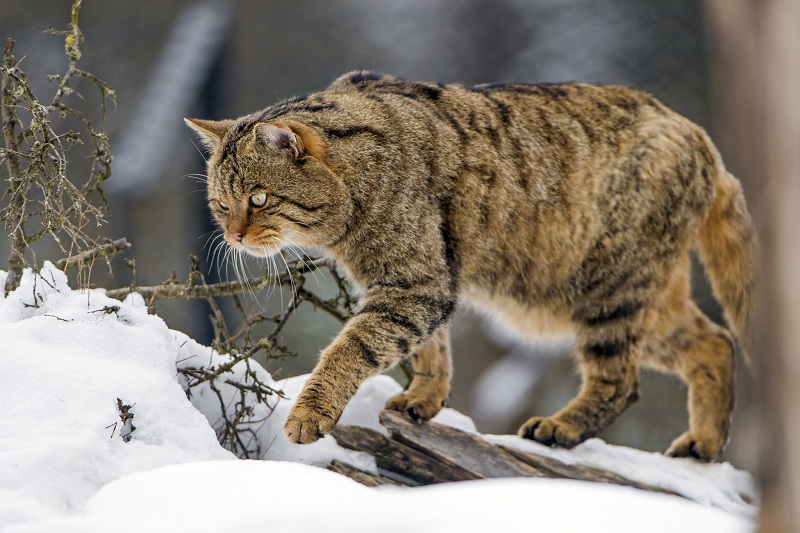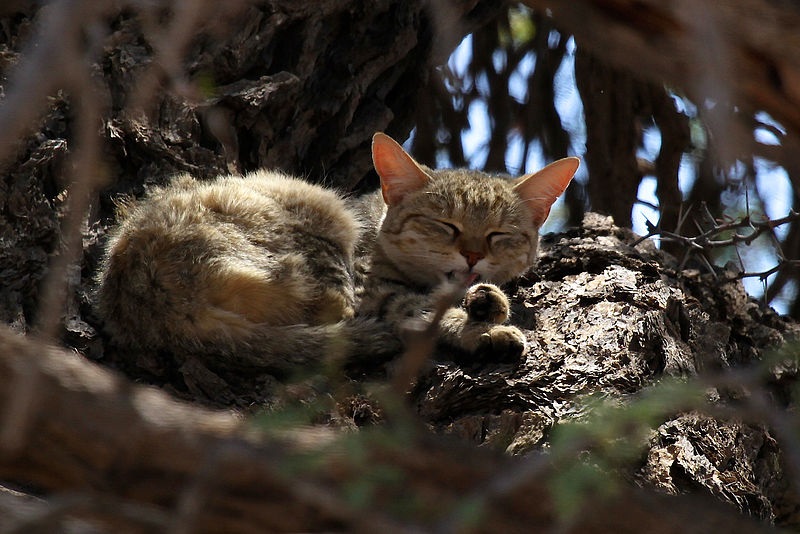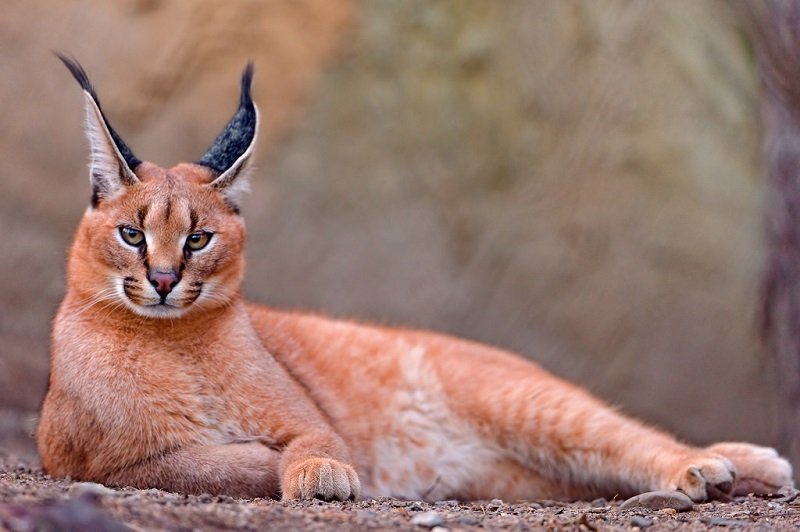 |
| (Source = Flickr) |
This cat named African lynx, or African wild cat, looks very much like a domestic cat.
It looks as though a tabby pattern (striped) cat that grows in a domestic house comes out for a walk alone.
But the African wild cats are a stark wildlife.
This cat and its animals are hunters who can eat animals of similar size.
Egyptian wild cats, eastern wild cats, etc. and live in Africa and the Middle East. It has a tabby pattern similar to a domestic cat, but generally has longer legs than a cat.
There is a reddish brown hairs behind his ears.
Body length except tail is about 70cm, tail length is about 30cm and tail tip is black.
Male is about 4 ~ 5kg, female about 2.7 ~ 4kg.
The average lifespan in the wild is about 15 years, but in an environment where humans are cared for, it can last up to 30 years. This wild cat can adapt to a variety of places, such as desert, grasslands, and compound forests, but it is not found in one place, tropical rainforests.
These predators love to hunt alone at night and eat birds, frogs, lizards, mice, weasels, and sometimes hunt lambs.
On the other hand, it is also a food for other carnivores.
Hawks, owls and other giant birds, wolves, foxes and lions are the natural enemies of the African wild cats.
The International Union for Conservation of Nature (IUCN) has been monitoring the conservation status of African wild cats since 1964 and classified them as Red List of Needed Species (LC). This means there is no danger of extinction.
 |
| (Source = Wikimedia Commons) |
Ancestors of house cat today
According to experts, it is estimated that about ten thousand years ago ancient Israelites tame the wild cats of Acrecans.
Photo: African Wild Cat / Photo Source: Wikimedia Commons
African wild cats in modern Israel are found not only in this area but also in the deserts of Saudi Arabia. I also go around the city. Many of them are mistaken for African cats, who walk around the city, as domestic cats.
Experts define wild cats as learning how to live with a house cat. It is because the cat has not lost its wildness and hunting instinct even if it is domesticized.
Long ago, farmers tame wild cats to get rats to hurt crops.
Relatives of wild cats in African wilderness
Relatives of African wild cats include cheetahs that can run at 112 to 113 kilometers per hour and leopards that can run at 60 to 88.5 kilometers per hour. King of the jungle lion can not be omitted.
Cape Town, South Africa, has found four wild cats that most people are unfamiliar with. All of these are relatives of African wild cats.
1. African Golden Cat
Inhabited by rainforests in central and western Africa, this cat is nocturnal, just like other cats and relatives.
They usually eat rodents, but they also eat algae. Because they are good at trees, they eat small monkeys that live on trees.
Black-haired cat (black-footed lynx)
The wild cats, the smallest cattails and animals in Africa, are also very similar to domestic cats. I live in a dry desert, so I have black hairs on my soles. It is because it treads hot sand.
This wild cat was classified as a vulnerable species (VU) by IUCN in 2002. It is a dangerous animal to be endangered.
 |
| Karakal (source = Flickr) |
2. Caracal
Kalakals live in forests as well as tropical meadows and savannas. It lives in a tunnel where other animals are scattered. It mainly eats rodents, birds and small deer.
These wild cats are very large and pointed because their ears are easily distinguishable from other wild cats.
3. Severity
It is a long, big-legged lynx with legs. The head size is very small compared to the body. It lives in rainforests and grasslands and eats ground squirrels, frogs, mice, rabbits and birds.
The body has black spots and can jump up to about 3m high.
If you are traveling in the desert and see cats and cats that look like cats, do not mistake them as home cats.
![[Issue] An African wild cat very similar to a domestic cat issue an african wild cat very similar to a domestic cat](https://moontore.com/wp-content/uploads/2019/02/issue-an-african-wild-cat-very-similar-to-a-domestic-cat-1200x700.jpg)


